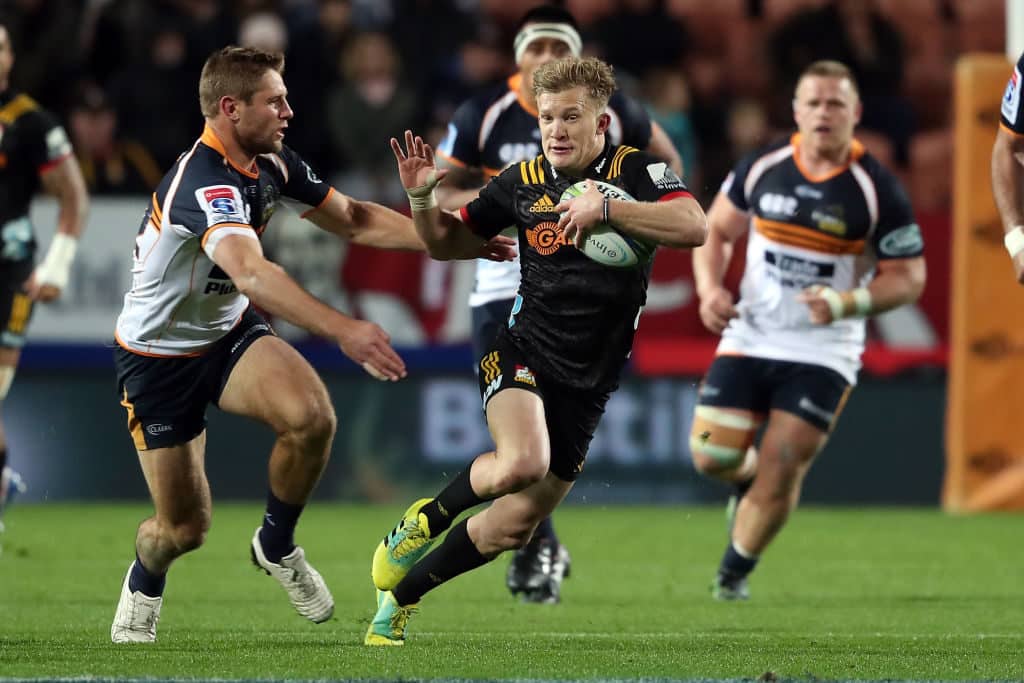The 2018 Super Rugby tournament has shown why Sanzaar needs to move back to a round-robin format sooner rather than later, writes JON CARDINELLI.
‘It’s what the Americans do.’ This is the typical response one can expect from Sanzaar officials when asking, for the umpteenth time, why the conference system was ever adopted at Super Rugby level.
We all know why Sanzaar wants more conferences and teams in the competition, though. More teams equals more games, which in turn should equal more broadcasting revenue.
What we’ve seen over the past few years, however, is a decline in match attendance. TV viewership has dropped as fans have changed channels to watch other sporting tournaments and contests that place an emphasis on quality rather than quantity.
Super Rugby no longer captivates and inspires as it once did. Perhaps that is due to a format that is, at a glance, confusing.
Perhaps it’s down to the fact that Sanzaar has manipulated the tournament structure to ensure that the best-placed teams from Australia, New Zealand and South Africa host a playoff every season, whether they have earned the right to do so or not.
REVIEW: Lady luck smiles on Lions, Sharks
The Crusaders, with 14 wins across 16 matches, certainly earned top spot in the overall standings. The same cannot be said about the Lions and Waratahs, who both finished with win records of 56% and appear less deserving of second and third place than a couple of New Zealand teams. The Hurricanes and Chiefs accumulated more log points and wins than the Lions and Waratahs, but will have to settle for fourth and fifth place because of the way the tournament is structured.
If the Super Rugby competition rewarded form in the regular season, and log points determined the final standings, then the Hurricanes would have finished second and the Chiefs third. In that scenario, the Hurricanes would be in a position to host a semi-final as well as quarter-final. The Chiefs would host the Waratahs instead of travelling to Wellington for a more difficult game against the Hurricanes.
One could also ask why more than half of the teams competing in the current tournament have been ushered into the playoffs. The Sharks finished eighth after winning 44% of their matches, but will feature in the knockout round.
If sanity prevailed, if log points determined log position and only four teams advanced to the playoffs, then the Crusaders would host the Lions next weekend while the Hurricanes battled the Chiefs. The Highlanders (10 wins) would have finished the season in fifth place and the Waratahs (nine victories) in sixth.
Sanzaar officials have told us that the 2018 format is an improvement on what we were subjected to in 2016 and 2017. They’re not wrong.
The infamous 18-team competition included four conferences. South African rugby benefited in the sense that six of its teams were spread across two ‘Africa’ conferences, with the conference winners guaranteed a home playoff and the next-best side entitled to a quarter-final place.
Sanzaar has since trimmed the teams from 18 to 15 and the conferences from four to three. What has remained constant, however, is the eight-team playoff structure as well as the bizarre notion of a guaranteeing a home playoff to conference winners – teams that may have struggled when competing against lower-ranked sides – like the Hurricanes and Chiefs – in other conferences.
Super Rugby has always had its challenges. Between 1996 and 2010, the biggest gripe was the travel, especially when teams were forced to traverse the Indian Ocean in the lead-up to a playoff.
Since 2011, and even more so since 2016, the changes to the format have been widely criticised. All Blacks captain Kieran Read said recently that Sanzaar would do well to move back to a round-robin league phase. Hurricanes coach Chris Boyd is another who feels that the current format is unfair and that some of the top sides aren’t receiving due reward for their consistency across the regular season.
Clearly the players and coaches aren’t happy with the status quo. Given the shocking attendances at the various stadiums this season, it’s evident that more radical changes are needed to rekindle the public interest.
Less is more in terms of teams and matches, and Sanzaar will have to go back to the round-robin format if it truly wants to take the tournament forward.
Photo: Getty Images





